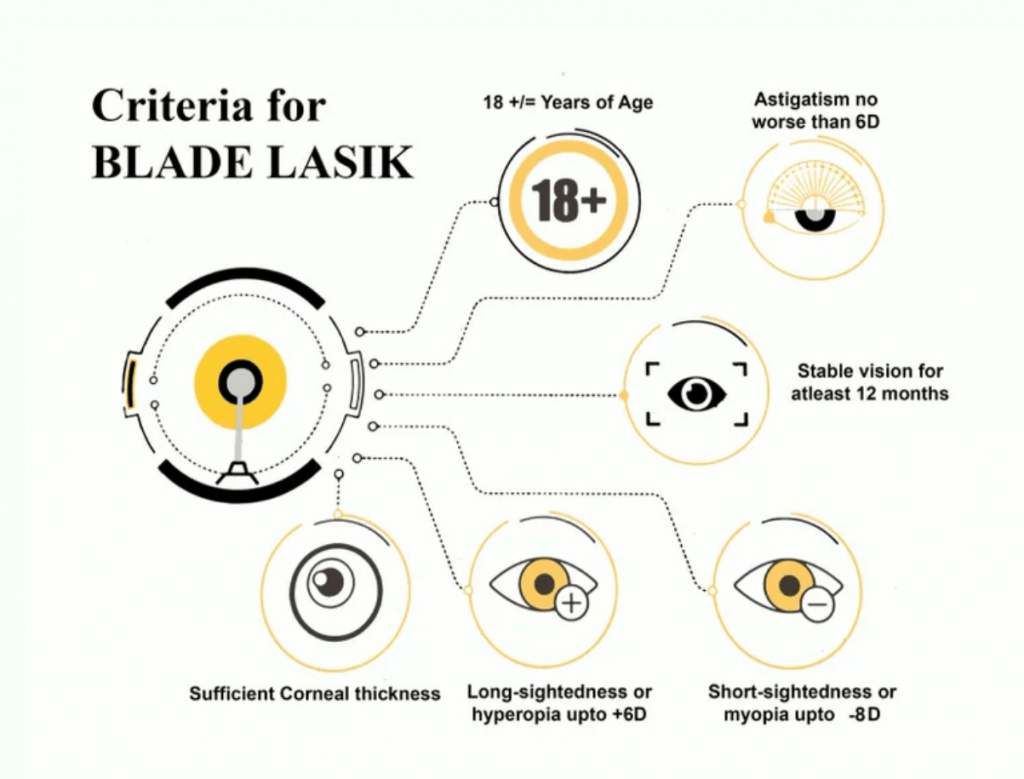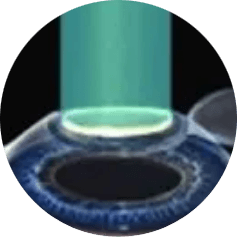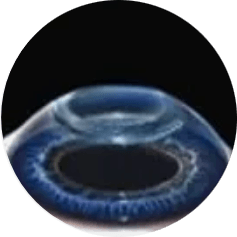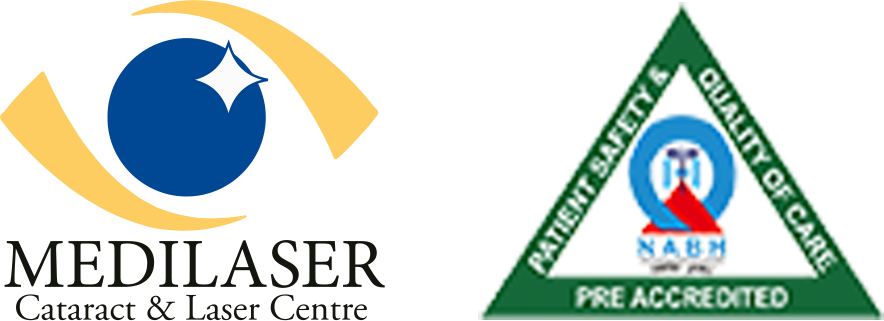Blade Lasik

The conventional LASIK procedure is time-tested and has seen many developments in the microkeratomes used and the laser ablation profiles. The procedure entails corneal flap creation with a microkeratome/blade followed by excimer laser power correction under the flap. The flap is then reposited.
Step By Step Procedure
STEP1

The refractive lenticule and small incision are created inside the intact cornea all in one step
STEP2

Top layer lifted. Shape of cornea corrected using Excimer laser
STEP3

Flap replaced back on cornea.
We, at Medilaser, use the Moria SBK (Sub- Bowman’s keratomileusis) One-Use Plus microkeratome which can make thinner flaps (90 micron) than conventional microkeratomes. It has the advantage of leaving more corneal tissue behind for better long term corneal strength and stability. The conventional flap thickness (130 micron) option is also available with this device. We use the Carl Zeiss Refractive Suite ( Femtosecond laser on Visumax and Excimer laser Mel 80) for all our laser refractive procedures. The excimer laser uses an Ablation Smart Profile or Tissue Saving Profile to correct the refractive error with best results.
Procedure:
- Takes 15 minutes for both eyes together
- Numbing drops/ topical anesthesia used- no injection, no patch, no pain, no stitches, no blood
- One has to lie down for the duration of the procedure
- Eye is kept open and cannot be closed by the patient
- While making the corneal flap, patient may sense some mild pressure on the eye and may experience a blackout in their vision for half a minute
- This sensation disappears after flap creation is complete
- Patient has to look at a fixation light when the excimer laser is fired
- Same procedure repeats for the other eye
- Goggles are given at the end of the procedure.
After the procedure:
- Expect to see blurry and experience some watering, irritation on the day of treatment
- The day after, vision and comfort will be better
- Care to be taken while instilling drops to not disturb the flap
- No water in the eyes and head bath for 7-8 days
- Protective sunglasses outdoors for two weeks
- Side-effects: Dryness, glare, light sensitivity, night vision blurry These are common and gradually get better over a few weeks.
Do's And Dont's
Before Surgery
- You should stop wearing soft contact lenses for 2 weeks before your initial evaluation.
- you should stop wearing rigid gas permeable (RGP) lenses for at least 3 weeks before your initial evaluation.
- you should stop wearing hard lenses for at least 4 weeks before your initial evaluation.
- The day before surgery, you should stop using: creams, lotions,makeup perfumes.
Do's After Surgery
- Connect with an ophthalmologist after the surgery for the first 6 months at regular intervals.
- Take eye drops to avoid the infections
- You may also be advised to use artificial tears to help lubricate the eye
Dont's After Surgery
- Don't rub the eyes.
- Do not resume wearing a contact eye lens in the operated eye, even if your vision is blurry
- Avoid swimming and using hot tubs or whirlpools for 1-2 months after the eye surgery
- Protect your eye from any bumping situation.
- Avoid the high time concentration contact.
Pros of blade lasik

Painless

Fast recovery

From last 25 year for eye patience

Correction of refractive errors (+/-)

FDA Approved
Frequently Asked Questions
The LASIK Procedure is almost painless and is performed with topical drop anesthesia. Patients walk in and out of the operation theatre in less than 15 minutes.
A speculum is placed on the eye that prevents a person from blinking during the procedure
For about 3 days indoors and 3 weeks outdoors.
Most of the blurriness goes away by the next day, though the clarity gradually increases over a couple of weeks.
Temporary dryness for a couple of months which can be treated with lubricating eye drops and difficulty in night driving for the first few weeks.
Usually the vision continues to stabilize for until a month.
You should avoid rubbing the eye after LASIK surgery for a couple of weeks.
You should take a below- the- neck shower for a few days after surgery.
Yes but your vision might be slightly blurred.
Protect your eyes from infection and injury for at least 1 week after the surgery.
